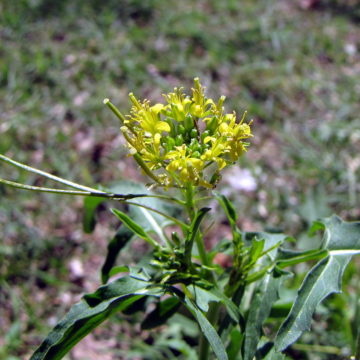Beth Kidd at JSTOR Daily:
 Throughout 1667, the ruins of London’s St Paul’s Cathedral became overgrown with a thicket of weeds. One yellow-flowered plant in particular mounted the walls in huge quantities. That spring, on the south side of the church, “it grew as thick as could be; nay, on the very top of the tower,” wrote the antiquary John Aubrey, reminiscing some years later. In September 1666, a terrible fire, beginning in a bakery on “Pudding Lane,” had swept through the city, destroying the homes of thousands. But it also left in its wake apparently fertile ground for plants. Some, like the yellow flower of St Paul’s, had been identified rarely before the Great Fire. So dramatically did this particular plant burst onto the scene that expert botanist and royal physician Robert Morison presumed it had sprung from the ashes themselves. Morison was here calling upon a theory of “spontaneous generation” of life from non-living or decayed material, proposed as early as Aristotle and still popular, as William Keezer explains, in the seventeenth century.
Throughout 1667, the ruins of London’s St Paul’s Cathedral became overgrown with a thicket of weeds. One yellow-flowered plant in particular mounted the walls in huge quantities. That spring, on the south side of the church, “it grew as thick as could be; nay, on the very top of the tower,” wrote the antiquary John Aubrey, reminiscing some years later. In September 1666, a terrible fire, beginning in a bakery on “Pudding Lane,” had swept through the city, destroying the homes of thousands. But it also left in its wake apparently fertile ground for plants. Some, like the yellow flower of St Paul’s, had been identified rarely before the Great Fire. So dramatically did this particular plant burst onto the scene that expert botanist and royal physician Robert Morison presumed it had sprung from the ashes themselves. Morison was here calling upon a theory of “spontaneous generation” of life from non-living or decayed material, proposed as early as Aristotle and still popular, as William Keezer explains, in the seventeenth century.
more here.
